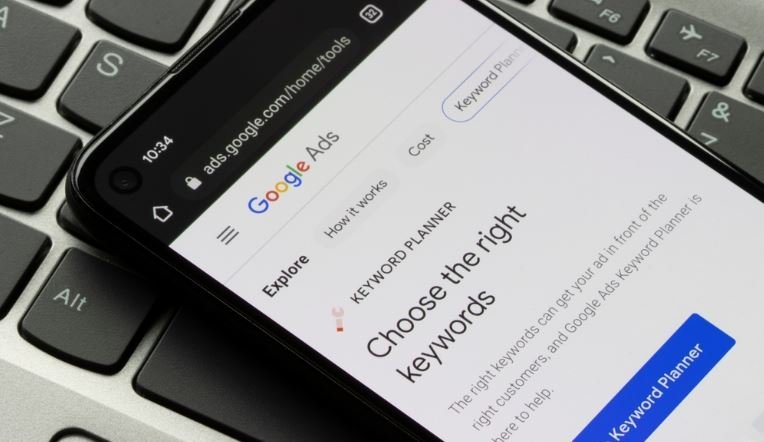Paid search campaigns are a powerful way to drive targeted traffic and achieve your marketing goals. However, running effective campaigns requires careful planning and execution. Here are some top tips to help you optimize your paid search efforts and get the best results.

1. Conduct Thorough Keyword Research
Identify Relevant Keywords
- Use Keyword Tools: Utilize tools like Google Keyword Planner, SEMrush, or Ahrefs to discover keywords relevant to your business. Look for keywords with high search volume and low competition.
- Focus on Intent: Choose keywords based on user intent. Target keywords that align with the stages of your customer’s journey, from research to decision-making.
Use Long-Tail Keywords
- Be Specific: Long-tail keywords are more specific and often have lower competition. They can attract users who are closer to making a purchase or taking action.
- Higher Conversion Rates: Because they are more targeted, long-tail keywords typically result in higher conversion rates and lower cost per click (CPC).
2. Write Compelling Ad Copy
Craft Engaging Headlines
- Grab Attention: Your ad headline should be attention-grabbing and relevant to the user’s search query. Use strong, action-oriented language.
- Include Keywords: Incorporate your primary keywords into the headline to improve relevance and click-through rates (CTR).
Create Persuasive Descriptions
- Highlight Benefits: Focus on the unique benefits of your product or service. Clearly explain how it solves the user’s problem or meets their needs.
- Include CTAs: Use clear and compelling calls-to-action (CTAs) that encourage users to take the desired action, such as “Buy Now,” “Get a Free Quote,” or “Learn More.”
3. Optimize Landing Pages
Ensure Relevance
- Match Ad Copy: Your landing page should closely match the messaging and offer presented in your ad. This ensures a consistent user experience and improves conversion rates.
- Clear CTAs: Include prominent and clear CTAs on your landing page. Make it easy for users to take the next step, whether it’s filling out a form or making a purchase.
Improve Load Speed
- Fast Performance: Optimize your landing page to load quickly. Slow load times can lead to higher bounce rates and lower conversion rates.
- Mobile Optimization: Ensure that your landing page is mobile-friendly, as a significant portion of users access websites via mobile devices.
4. Utilize Ad Extensions
Enhance Ad Visibility
- Site Link Extensions: Add site link extensions to direct users to specific pages on your website, such as product categories, special offers, or blog posts.
- Call Extensions: Include call extensions to allow users to call your business directly from the ad. This is particularly useful for local businesses.
Leverage Other Extensions
- Location Extensions: Show your business address to users in your area. This helps users find your physical location and can drive more foot traffic.
- Structured Snippets: Use structured snippets to highlight specific aspects of your products or services, such as “Free Shipping” or “24/7 Support.”
5. Implement Targeted Audience Segmentation
Use Demographic Targeting
- Refine Targeting: Segment your audience based on demographics such as age, gender, income, or education. Tailor your ads to resonate with different audience segments.
- Custom Audiences: Create custom audiences based on user behavior, such as past website visitors or customers who have made a purchase.
Employ Geographic Targeting
- Location-Based Ads: Target users based on their geographic location to ensure that your ads reach people in specific regions, cities, or countries.
- Local Relevance: Customize your ads to include location-specific information or promotions, which can enhance relevance and engagement.
6. Monitor and Adjust Bids
Use Bid Adjustments
- Optimize Bids: Adjust bids based on performance data to allocate budget more effectively. Increase bids for high-performing keywords and reduce bids for low-performing ones.
- Automated Bidding: Consider using automated bidding strategies, such as Target CPA (cost per acquisition) or Target ROAS (return on ad spend), to optimize bids based on campaign goals.
Manage Budget Effectively
- Set Realistic Budgets: Allocate budget according to the performance of your campaigns. Monitor spend regularly and make adjustments as needed to stay within budget.
- Adjust Based on Performance: Reallocate budget to high-performing campaigns or keywords to maximize ROI and improve overall campaign efficiency.
7. Analyze Campaign Performance
Review Key Metrics
- Track Metrics: Regularly review metrics such as CTR, CPC, conversion rate, and ROAS to assess the performance of your campaigns.
- Identify Trends: Look for trends in your data to understand what’s working and what’s not. Use this information to make data-driven decisions.
Implement A/B Testing
- Test Variations: Conduct A/B tests on ad copy, landing pages, and targeting options to identify the most effective combinations. Use test results to refine your strategies.
- Continuous Improvement: Regularly test and optimize your campaigns to enhance performance and achieve better results over time.
8. Stay Updated with Industry Trends
Keep Up with Changes
- Platform Updates: Stay informed about updates and changes to paid search platforms like Google Ads or Bing Ads. New features and tools can offer additional opportunities for optimization.
- Industry Trends: Follow industry news and best practices to stay ahead of trends and incorporate the latest strategies into your campaigns.
Adapt Strategies
- Flexibility: Be prepared to adapt your strategies based on changes in user behavior, market conditions, and competitive landscape. Continuously refine your approach to maintain effectiveness.
Conclusion
Running effective paid search campaigns involves a combination of strategic planning, optimization, and ongoing analysis. By conducting thorough keyword research, writing compelling ad copy, optimizing landing pages, and leveraging ad extensions, you can enhance your campaign performance and maximize ROI. Additionally, employing targeted audience segmentation, monitoring and adjusting bids, and staying updated with industry trends will help you stay competitive and achieve your marketing goals. Embrace these top tips to elevate your paid search efforts and drive better results for your business.




